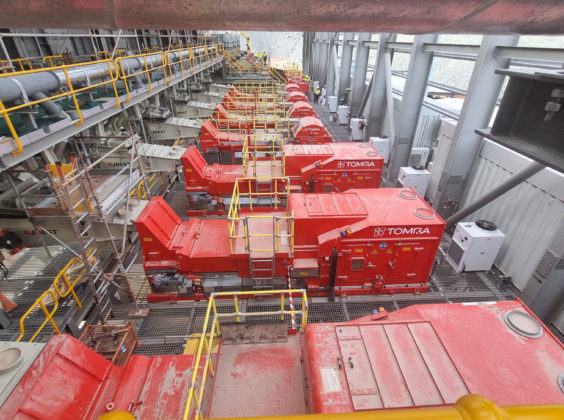TOMRA Mining’s advanced sorting technology is helping improve ore recovery and reduce energy consumption through early and effective waste reduction at Pilbara Minerals’ Pilangoora operation in Western Australia.
The sorting installation, part of Pilbara Minerals’ P680 Expansion Project, has a capacity of more than 1,000 t/h, and, TOMRA says, demonstrates the power of its cutting-edge technology to improve overall ore recovery and reduce energy consumption through early and effective waste reduction.
Pilbara Minerals successfully commissioned the world’s largest lithium ore sorting plant last year, with TOMRA announcing the installation plans back in 2023.
Powered by TOMRA Mining’s cutting-edge sensor-based sorting technology, the facility breaks new ground in hard-rock lithium processing, improving lithium recovery and increasing final product quality, while significantly reducing energy consumption through the elimination of waste early in the process.
The large-scale project for the design and installation of the new crushing and ore sorting plant was delivered on schedule, within the deadlines set by Pilbara Minerals, TOMRA claims.
Gavin Rech, Area Sales and Technical Manager Australia at TOMRA Mining, said: “The success of this project is a testament to TOMRA Mining’s collaborative approach and capacity to deliver innovative, large-scale, high-capacity sorting solutions tailored to the unique demands of our clients, providing continuous support from the testing and design phases right through to installation, commissioning and beyond. What’s more, the scale and success of this plant have demonstrated to the mining industry the benefits and capacity of sorting.”
One of the challenges in lithium mining is managing spodumene ore within barren host rock. These non-lithium-bearing materials, some with densities similar to lithium-rich spodumene, complicate traditional metallurgical methods and can reduce the efficiency of downstream processes.
TOMRA Mining tackled this challenge with its high-precision sensor-based sorting technology: 10 sorters (pictured below) – four TOMRA XRT COM TER for fines, three TOMRA XRT COM2.0 for mid-sized particles, and three TOMRA PRO Primary Color for coarse-sized particles – are in the circuit.

The facility’s ability to remove barren material upstream enhances the efficiency of downstream processes, reducing energy consumption by 8-15 GWh annually and ensuring consistent product quality, the company says.
Rech added: “The ore sorters enable a better utilisation of the resource as they remove contamination from the ore upstream. This means that the wet plant does not use energy, water and reagents to process barren ore, and that the contamination doesn’t reduce the efficiencies and recovery of the downstream plant. In addition, our sorters’ high availability and efficiency ensure consistent quality feed for the processing plant.”
TOMRA’s involvement began in 2017 with geological assessments and bulk test work conducted at its Sydney Test Center. These tests validated the performance of the sorting equipment under operational conditions and formed the basis of the sorting plant design, it explains.
The TOMRA team worked closely with Pilbara Minerals and engineering partner DRA Global on every aspect of the project from equipment testing to plant layout and operational integration.
During installation and commissioning, TOMRA mobilised a global team of specialists from Australia, South Africa, Germany and beyond to ensure the project met the deadlines. This effort culminated in a seamless ramp-up to full operation.
This hands-on support continues with a 24-month service contract, providing on-site support seven days a week, 365 days a year to optimise sorter performance and address any operational challenges.




